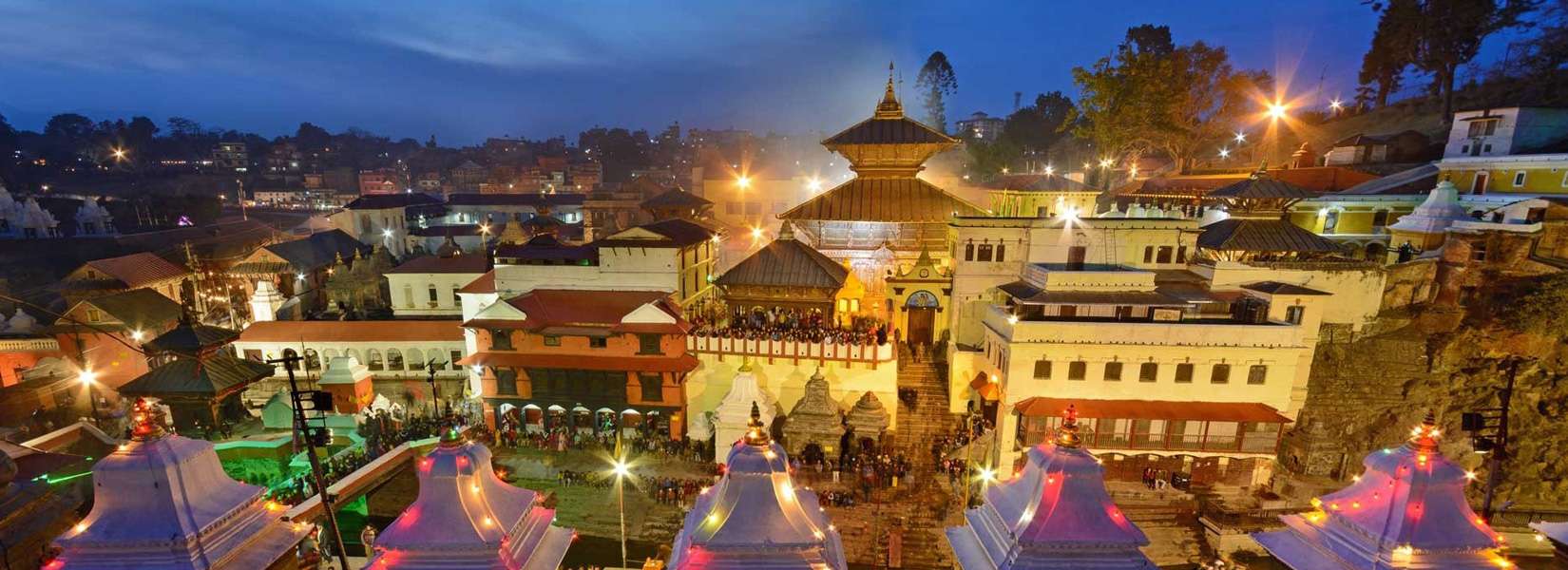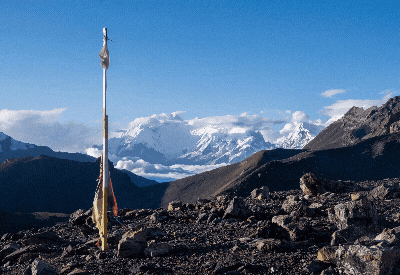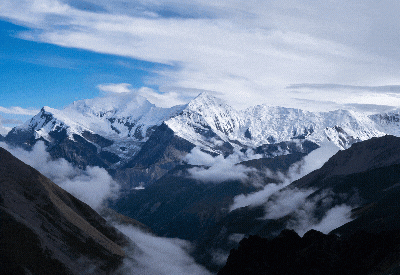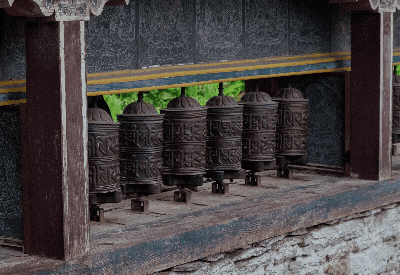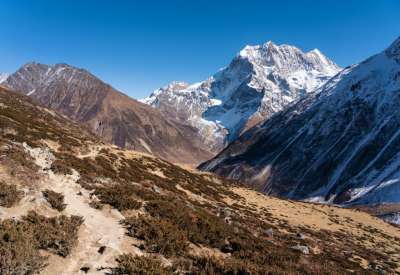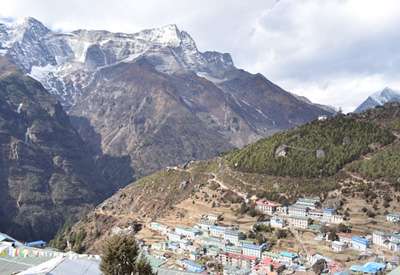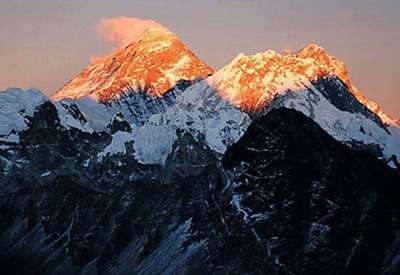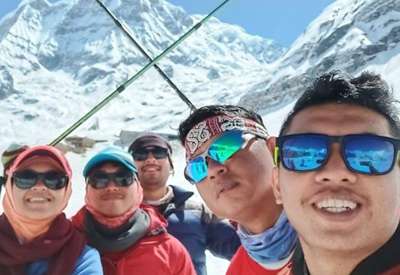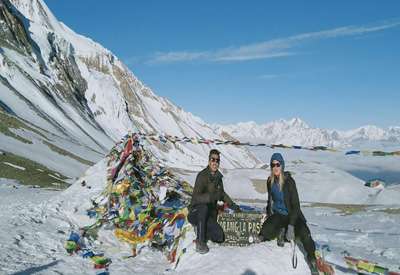Nepal is a country known for its cultural diversification and immense natural pleasure, that soothes one’s mind and makes it overwhelming. Indeed Nepal is truly a gift from God as there are thousands of beautiful places- when it comes to the beauty nobody can match its level. And when it comes to Religious sites every site has its own history and tales to tell and choosing only one is really tough.
Nepal has a history of tourism since long ago. It is a hub for adventurers, travelers and so on, all of them are lured to see our countries historical heritages and know about Nepal. The significant majority of the Nepalese follows Hinduism and most of the religious sites are within the Kathmandu valley. At every step, one can see temples and sanctuary, parade and devotional music. Some of the mention religious sites are listed as a world heritage sites by UNESCO. Thus, to sum it up Himalaya Hub has listed some of the places, you can list to visit first or let’s say make a bucket list; so that you an can have magnificent experience and lifetime memories.
Bouddhanath
Bouddhanath is among the largest stupas in South Asia, located on the eastern side of Kathmandu. It is one of the few places in the world where Tibetan culture is vibrant, accessible, and unbound. Hence, it has become the focal point of Tibetan Buddhism in Nepal. Gompa monasteries, Curio shops, and restaurants surround the stupa. Monks walk about in maroon robes. The Stupa tower is decorated with a pair of eyes on each side representing the all-knowing nature of Boudha. It is believed that if you stare at the eye of the Boudhanath for a longer time you will have a deep effect on you. Well, it surely soothes your heart.
There is a circular mound of 108 small images of Dhyani Buddha Amitabha around the base of the stupa. A brick wall used in the stupa has 147 niches, each with four or five prayer wheels bearing the immortal mantra ‘Om Mani Padme Hum’. In late afternoons, you will find the monks chanting prayers around the stupa which will produce a spiritual vibe around the complex.
Boudhanath hosts the largest celebration in February or March during the festival of Losar (Tibetan New Year)
Note: Always remember to walk around the stupa clockwise.
Pashupatinath Temple
Located at the banks of the Bagmati River of Kathmandu, the Pashupatinath Temple is a famous and sacred Hindu temple. Dedicated to Lord Shiva, Pashupatinath is one of the most important pilgrimage sites for the Shiva devotees. In 1979, it was included as one of the seven monument groups in UNESCO’s designation of Kathmandu Valley as a cultural heritage site. The main pagoda-style temple with a gilded roof, wood carvings with the finest quality and four sides covered in silver was built in the 5th century and later renovated by Malla kings. There are 1000 Shiva Lingam in Pashupatinath. Bagmati sanctity also called Arya Ghat makes Pashupatinath most sacred cremation site.
One of the major Festivals of the temple is Maha Shivaratri on which day over 1 million devotees visits here. The Pashupati Bagmati Aarati is the most enthrall rituals at Pashupatinath Temple that is carried out every day. The Aarati follows three priests conducting the custom with lanterns, oil lamps, and other religious elements and chanting the sacred mantra.
Note: The Aarati is performed at 6 pm every day. The attendees experience a blissful moment.
Swaymbhunath Stupa (The Monkey Temple)
The Religious sites in Kathmandu valley are the major sightseeing attractions for those who are looking for a pilgrimage tour in Nepal. Swyambhunath Stupa is, perhaps, the best place to observe the religious harmony in Nepal. Located on the top of the hill west of Kathmandu value is one of the popular and instantly recognizable symbols of Nepal. Due to the large tribes of monkeys that guards the hill, also referred as “The Monkey Temple”.
The 365 step (1 step for each day of the year) stone steps lead straight to one of the most sacred Buddhist sites, from where painted eyes of Swayambhunath seem to peer down your soul. The monasteries here have huge prayer wheels, fine Buddhist paintings, and special butter lamps that are lit every day after presenting monetary offerings. From the hilltop, you will have a bird’s eye view of Kathmandu valley. Early evening views are even more striking as the city lights begin to illuminate.
Changunarayan Temple
Changunarayan Temple located in the fabled town of Bhaktapur, the city of devotees. This is the least-visited of all of the religious sites but is a shame to miss. The two-story Vishnu temple at the top of the hill is said to be the oldest temple in Nepal and represents a turning point in Nepali architecture and culture. We can find the temples of Lord Shiva, Ashta Matrika, Chhinnamasta, Kileshwor and Krishna inside the courtyard of the main temple. Our package also includes Nagarkot to Changunarayan hike.
Muktinath Temple
Muktinath also called Mukti Kshetra, which literally means the "place of liberation or moksha" is a sacred place for both Hindus and Buddhists Pilgrims. Thousands of Hindu devotees from Nepal and India visit the Muktinath shrine every year. Jomsom- Muktinath trek offers a picturesque scenery. The outer courtyard has 108 cow’s head tapes and it is said that bathing in the waters from 108 cow’s head spigots here guarantees salvation after death.
The devotees take their sacred bath even in the freezing temperatures. It is also famous for its cold springs, Vishnu temple, ancient fossils, and Jwalamai (Goddess of Fire) Temple and natural gas jets that provide Muktinath's famous eternal flame.
Dakshinkali Temple
Dakshinkali Temple, located at the southern edge around 22kms from the valley, one of the main temples in Nepal for the goddess Kali; the most bloodthirsty incarnation of Parvati. It is the famous Hindu pilgrimage destination between two hills and at the confluence of two rivers. There is a strong belief in the ability of the goddess to make wishes come true.
That is why, twice a week (Tuesdays and Saturdays) witnessing the sacrifice of goats, chickens, pigs and even buffalo to satisfy her bloodlust. This is the main way to worship the goddess Kali, especially seen during the Dashain festival. Furthermore, during the annual celebration of Dashain in October, the temple is literally washed with blood and the image of Kali is bathed with it. The pathway behind the main temple uphill offers good views.
Note: Non-Hindus are not allowed into the actual compound of goddess Kali, but visitors can watch from the surrounding terraces.
Budhanilkantha Temple
Budhanilkantha is a Hindu temple, located at the base of the Shivapuri Hill. The Budhanilkantha statue of the Hindu god Vishnu is the largest and most beautiful stone carving in all of Nepal. The deity is about a thousand years old. Budhanilkantha literally means “Old Blue Throat”. Vishnu (Narayan) lies peacefully on a most unusual bed; the coils of the multiheaded snake, Ananta or Shesha in the cosmic ocean.
In addition, Vishnu four hands hold the four symbols, the Shankha as conch shell (the four elements), Chakra as disc (representing the mind), Gadha as the club (primeval knowledge) and the Padma as lotus flower (the moving universe). There is the huge celebration during Chaturmasya periods (Lord Vishnu when sleeps on the cosmic ocean) and in late October or early November period during Haribodhini Ekadashi day (Lord Vishnu wakes up).
Find out your convenience date as suite your holiday or if required any information simply drop your inquiry mail to us. Himalayan Hub will be happy to customize your tour to Nepal accordingly.

